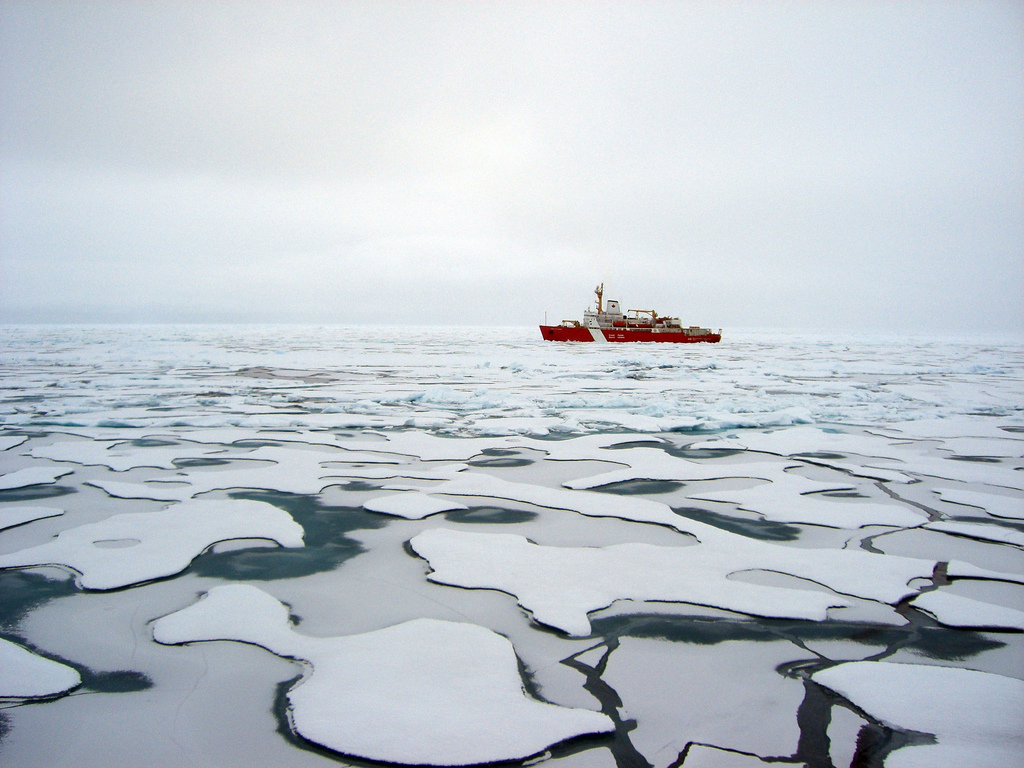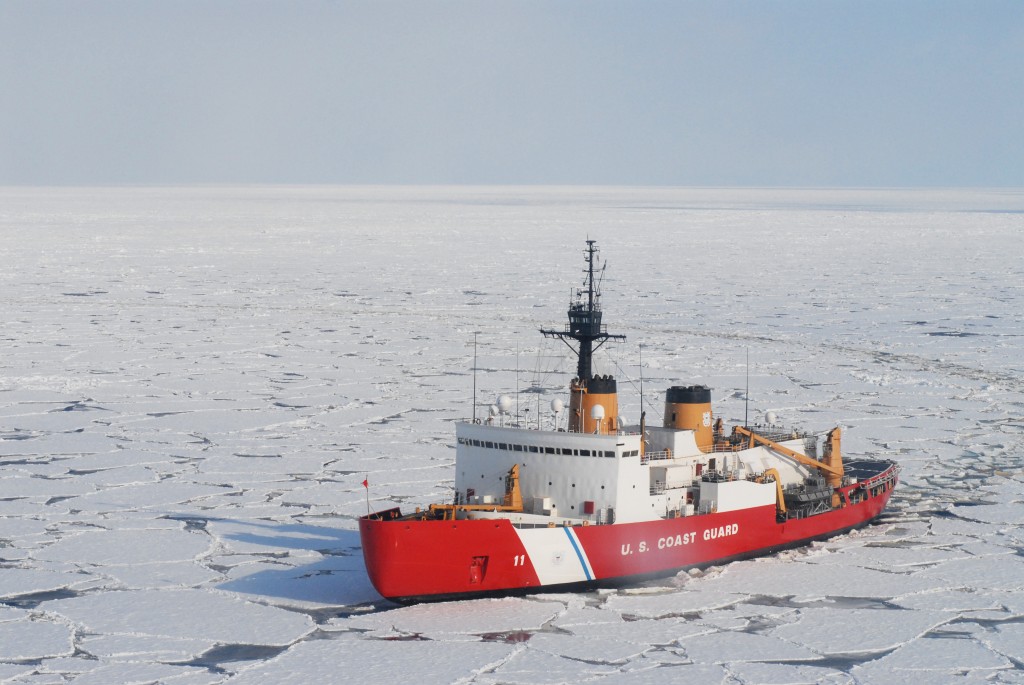The Arctic is the region of the world most dramatically transformed by the effects of a warming climate, caused by the burning of fossil fuels for energy.
 Melting ice and technological advances are opening up the Arctic. The region’s rapid warming (more than twice as fast as the rest of the world) poses long term regional and global environmental challenges.
Melting ice and technological advances are opening up the Arctic. The region’s rapid warming (more than twice as fast as the rest of the world) poses long term regional and global environmental challenges.
America’s History in the Arctic
As the Arctic Ocean’s sea ice thaws, bordering nations are preparing to tap vast energy resources held beneath the Arctic Ocean: about 22% the world’s undiscovered fossil fuels. Since the 1920s, Americans have known that there were vast reserves of oil in the North Slope of Alaska. At the time, the Navy was given the territory now known as the National Petroleum Reserve, which was used for oil production to supply the fleet as it transformed from coal to oil. The reserve was never tapped, however, because of new finds in more accessible areas like Texas, California, and Oklahoma.
In 1968, a vast reserve of oil, the largest single field in the U.S., was discovered in Prudhoe Bay. With the onset of the first Arab oil crisis in 1973, Congress authorized the expedited building of the Trans Alaska Pipeline System (TAPS). Completed in 1977 at a cost of $8 billion (about $32 billion in today’s dollars), the pipeline marked a significant infrastructure investment. It transports crude oil from Alaska’s North Slope, across 800 miles of tundra, rugged mountains and rivers to Valdez, North America’s northernmost ice-free port.
TAPS carries approximately 15 percent of the nation’s domestic oil production and has transported more than 15 billion barrels of crude oil in its lifetime. It has a maximum daily capacity of 2.136 million barrels of oil, although it has never transported its full capacity. In 2011, Alaska’s North Slope oil production was 562,000 barrels of oil per day. That means that the pipeline is only operating at about ¼ capacity. At its peak production in 1989, Prudhoe Bay was producing about 2 million barrels per day – almost at the TAPS capacity.
America’s Future in the Arctic
Due to thinning ice and advancements in technology, deep seabed drilling for oil and natural gas in the Arctic is now a technical possibility. The U.S. Geological Survey (USGS) estimates that the Arctic holds 22% of the world’s undiscovered energy resources. Arctic resources include 13% of the world’s undiscovered oil (90 billion barrels of oil) and 30% of its undiscovered gas (50 trillion cubic meters of natural gas and 44 billion barrels of natural gas liquids). 84% of these resources are expected to occur offshore under the Arctic Ocean.
Of the undiscovered resources, America’s Arctic, encompassing northern Alaska and the adjacent continental shelf, is estimated to hold 29.96 billion barrels of oil and 72 billion barrels of natural gas (about 33% of oil and 18% of technically recoverable gas in the Arctic) – not including unconventional oil and gas deposits. There are an estimated 2 billion barrels of oil and 80 trillion cubic feet of gas in source rock reserves in the Alaskan North Slope (Alaskan Arctic).
We should be careful, however, about rushing to drilling in the Arctic. The effects of a very large oil spill on the marine environment in the Chukchi and Beaufort Seas are unknown. Since oil production in the Arctic thus far has been limited, impacts have not been thoroughly studied. The lack of scientific evidence presents critical concerns about further oil and gas development in the Arctic.
Limits to America’s Presence in the Arctic
Moreover, the U.S. has limited international legal jurisdiction over exploration in the Arctic because it is not party to the United Nations Convention on the Law of the Seas (UNCLOS). UNCLOS establishes that the five nations bordering the Arctic: Russia, the United States, Canada, Norway and Denmark (via Greenland), are granted Exclusive Economic Zone’s (EEZ) of 200 nautical miles off their coasts. However, without being a party to UNCLOS the U.S. cannot secure international legal titles to sites more than 200 miles off the coast. If ratified, the U.S. could gain recognized international rights to 600 miles of extended continental self. Other countries, notably Russia and Canada, have submitted claims that reach to the North Pole.









